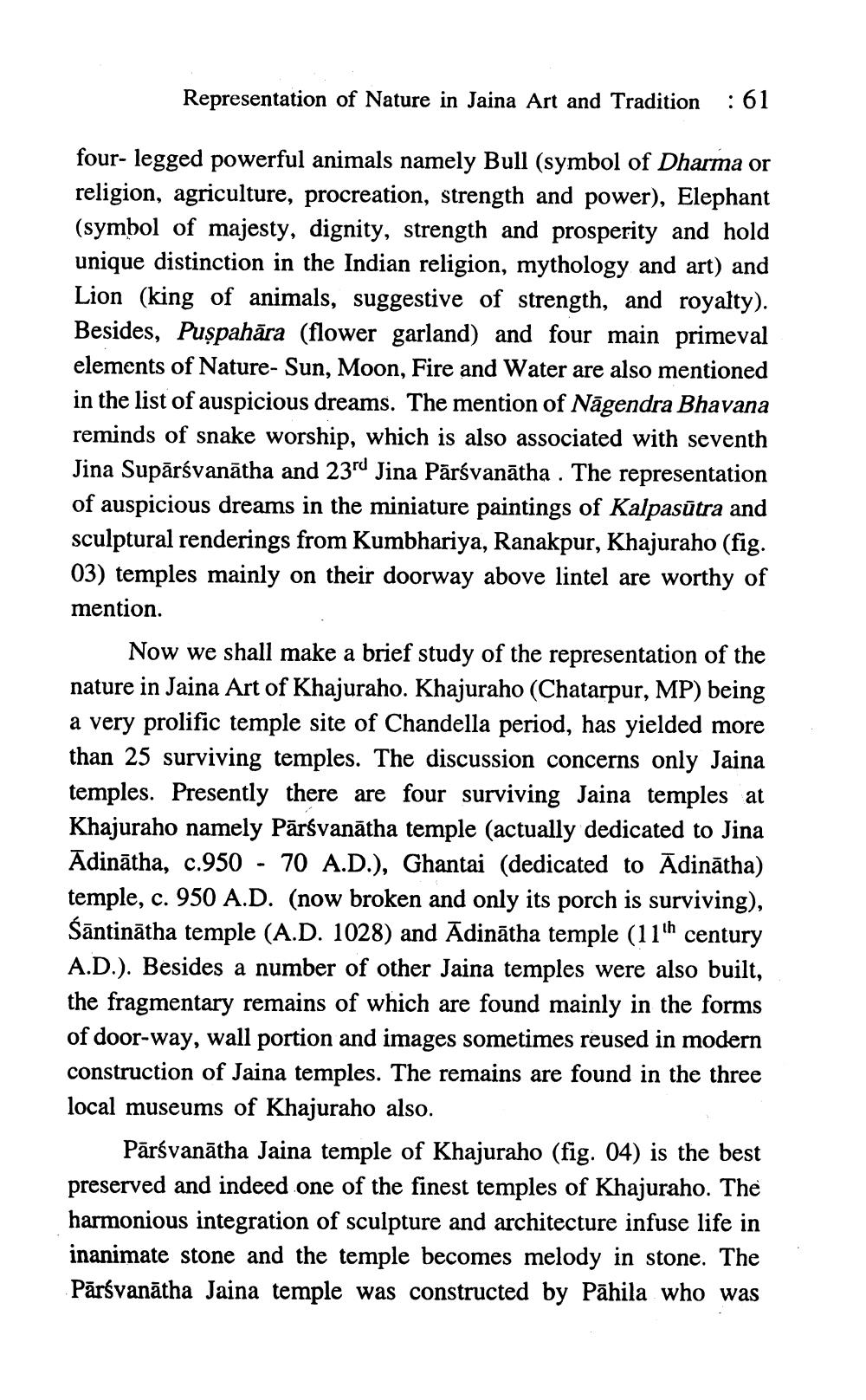________________
Representation of Nature in Jaina Art and Tradition
: 61
four-legged powerful animals namely Bull (symbol of Dharma or religion, agriculture, procreation, strength and power), Elephant (symbol of majesty, dignity, strength and prosperity and hold unique distinction in the Indian religion, mythology and art) and Lion (king of animals, suggestive of strength, and royalty). Besides, Puspahāra (flower garland) and four main primeval elements of Nature- Sun, Moon, Fire and Water are also mentioned in the list of auspicious dreams. The mention of Nāgendra Bhavana reminds of snake worship, which is also associated with seventh Jina Supārsvanātha and 23rd Jina Pārsvanātha . The representation of auspicious dreams in the miniature paintings of Kalpasūtra and sculptural renderings from Kumbhariya, Ranakpur, Khajuraho (fig. 03) temples mainly on their doorway above lintel are worthy of mention.
Now we shall make a brief study of the representation of the nature in Jaina Art of Khajuraho. Khajuraho (Chatarpur, MP) being a very prolific temple site of Chandella period, has yielded more than 25 surviving temples. The discussion concerns only Jaina temples. Presently there are four surviving Jaina temples at Khajuraho namely Pārsvanātha temple (actually dedicated to Jina Ādinātha, c.950 - 70 A.D.), Ghantai (dedicated to Ādinātha) temple, c. 950 A.D. (now broken and only its porch is surviving), Šāntinātha temple (A.D. 1028) and Ādinātha temple (11th century A.D.). Besides a number of other Jaina temples were also built, the fragmentary remains of which are found mainly in the forms of door-way, wall portion and images sometimes reused in modern construction of Jaina temples. The remains are found in the three local museums of Khajuraho also.
Pārsvanātha Jaina temple of Khajuraho (fig. 04) is the best preserved and indeed one of the finest temples of Khajuraho. The harmonious integration of sculpture and architecture infuse life in inanimate stone and the temple becomes melody in stone. The Pārsvanātha Jaina temple was constructed by Pāhila who was




